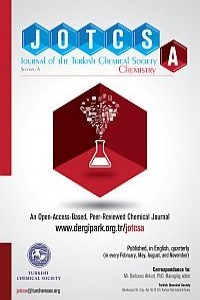Fuller Toprağı ile Aerojel Üretimi
Son yıllarda gözenekli malzemeler endüstri alanında oldukça yaygın olarak kullanılmaya başlanmıştır. Bu nedenle günümüzde gözenekli malzemeler üzerinde bir çok ar-ge çalışması yapılmaktadır. Gözenekli malzemeler mikrogözenekli mezogözenekli ve makrogözenekli malzemeler olarak sınıflandırılmaktadır. Son yıllarda üzerinde pek çok çalışma yapılmış gözenekli malzemelerden bir tanesi dünyanın en hafif katısı olarak bilinen aerojellerdir. Aerojeller, madde içinde bulunan sıvının hava ile değişimi sayesinde elde edilen adeta süngeri andıran silika bazlı katı maddelerdir. Kister tarafından ilk defa 1931 yılında sentezlenmiştir. Aerojellerin %99,8’ i havadan oluşur. Bu da onların düşük yoğunluklu yüksek gözenek yapılı, yüksek alanlı ve düşük termal iletkenlik kat sayılı olmalarını sağlar. Termal iletkenlik katsayısının düşük olması aerojellerin en gelişmiş fiber-glass yalıtım malzemesinden 39 kat daha iyi yalıtkan olmalarını sağlar. Aerojeller çeşitli maddelerden sentezlenebilir. Silika, aerojel üretiminde en sık kullanılan maddelerden bir tanesidir. Silika aerojeller genellikle sol-jel yöntemi ile silikon alkoksit, Tetraetil ortosilikat (TEOS), Tetrametil ortosilikat(TMOS), Polietoksidisilokson (PEDS), gibi maddelerden sentezlenmektedir. Bu projede daha önce denenmemiş olan fuller toprağı kullanılacaktır. Fuller toprağı, sulu alüminyum silikatların değişimiyle oluşan kaolindir. Sol-jel yöntemi laboratuvar koşullarında uygulaması kolay olan bir metottur. Büyük ölçekli üretimler içinde kullanımı yaygınlaşmaktadır. Sol-jel yöntemi 3 basamaktan meydana gelmektedir. İlk aşamada silika kaynağı ile sol hazırlanarak katalizör ile birlikte jelleşme meydana getirilir. İkinci aşama yaşlandırılma olarak adlandırılır. Aerojele katılığının ve sağlamlığının kazandırıldığı basamaktır. Üçüncü aşama ise jel yapısının birikmesini önlemek amacıyla yapılan kurutmadır. Silika bazlı sol-jel yöntemi ile üretilen aerojellerin, yapılan araştırmalar sonucu gözenekliliklerinin yüksek olduğu saptanmıştır. Bu projede daha önce denenmemiş bir madde seçilerek daha fazla gözenek sayısı elde edilmesi, buna bağlı olarak termal iletim katsayısı daha düşük aerojel sentezlenmesi beklenmektedir. Yapılan çalışmalar ile aerojel üretimi için optimum karıştırma süresi, kurutma sıcaklığı ve madde miktarı belirlenecektir. Beklenen sonuçların elde edilmesi durumunda, oluşturulan aerojeller, boya, plastik ve tekstil sanayide yalıtım malzemesi olarak kullanılabililecektir.
Production of Aerogels with Fuller's Earth
In recent years, porous materials have started to be used commonly in industrial processes. Therefore, numerous research/development studies are performed on porous materials today. Porous materials are further classified as microporous, mesoporous, and macroporous materials. Being heavily studied in recent years, aerogels, which are known as the lightest solid in the world, are one of those porous materials. Aerogels are silica-based solids which resemble sponges and they are obtained with the exchange between air and the liquid inside the material. They were first synthesized by Kister in 1931. 99.8% of aerogels is composed of air. It is thus they have low density, high porosity, high surface area, and a low thermal conductivity coefficient. Thanks to the lowness of thermal conductivity coefficient, aerogels are 39 times better insulators than the most advanced fiber-glass insulating materials.Aerogels can be synthesized from several materials. Silica is one of the most commonly used materilas in the production of aerogels. Silica-based aerogels are generally synthesized, by employing a sol-gel method, from silicon alkoxide, tetraethyl orthosilicate (TEOS), tetramethyl ortosilicate (TMOS), polyethoxydisiloxane (PEDS), etc. In this communication, Fuller's earth, which has not been used before, will be used. Fuller's earth is a type of kaoline produced by the exchange of aqueous aluminum silicates. Sol-gel method is easy to apply in laboratory conditions. It is becoming more popular for large-scale production schemes. Sol-gel method is comprised of 3 phases. In the first phase, sol is being prepared with silica source and gelation is obtained with the action of a catalyst. The second phase is known as “ageing”, which bestows the solidness and robustness to the aerogel. The third phase is drying in order to prevent accumulation of gelous structure. Aerogels produced with silica-based sol-gel method reportedly have a high porosity. In this study, it is expected to have a higher porosity by employing a material that has not been used before, and to synthesize an aerogel having less thermal conductivity coefficient. Relevant research will reveal the optimum mixing time, drying temperature, and the amount of material for the production of the aerogel. Provided that expected results are acquired, the aerogels produced might have applications in the fields like paints, plastics, and textiles as insulating materials.
